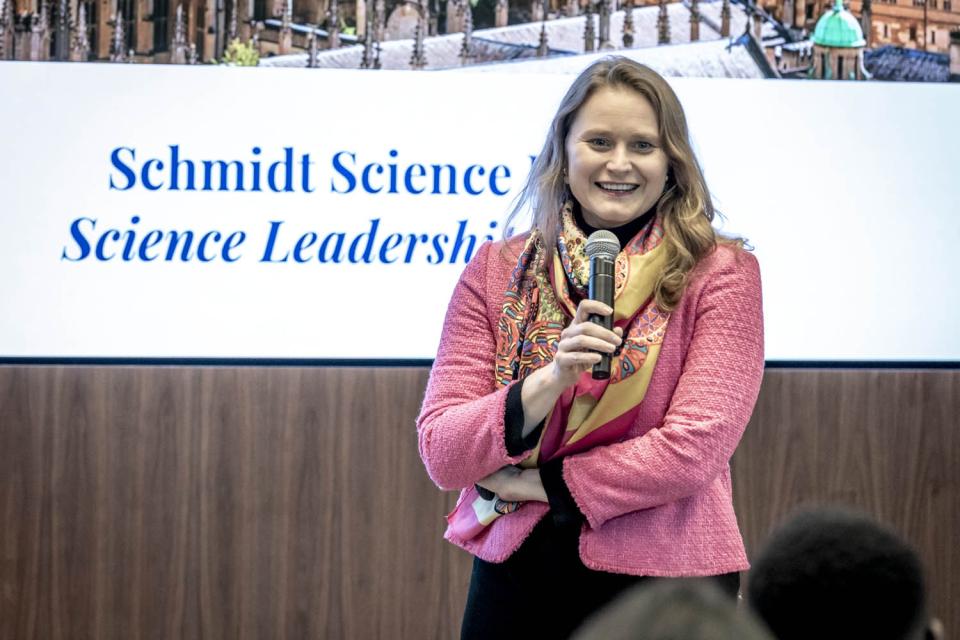Advocates for interdisciplinary science need only to point to the world’s biggest problems to make their case. Climate change, food insecurity and 21st-century healthcare are all issues requiring scientific collaboration across disciplines. But if science is to realise the potential of interdisciplinarity, it must incentivise it.
Megan Kenna, executive director of Schmidt Science Fellows (SSF), says this remains the biggest challenge in the sector, which is why the organisation has partnered with Times Higher Education on a new ranking for interdisciplinary collaboration.
“Our incentive structure for science is at odds with how we believe science is best conducted to tackle global challenges,” Kenna says. “The world’s challenges know no disciplinary boundaries, so we must find ways to encourage scientists to work collaboratively across disciplines to solve them. While there is broad support for interdisciplinary science across higher education, how universities incentivise, recognise and reward scientists does not always encourage interdisciplinarity.” Kenna hopes that the THE ranking will help universities chart their progress toward interdisciplinary excellence and reward those who do it exceptionally well.
SSF was founded to support interdisciplinary science, training and developing the world’s brightest scientific minds to work together across disciplines. That might mean training in a different field. It will certainly mean teaching academics to communicate their ideas clearly and make their academic writing digestible for a broad scientific audience. “You cannot do science well unless you are able to communicate across those disciplines,” Kenna says. “It is a key part of all of this.”
Kenna recognises the demands made of academics and their time. Tenure and promotion committees can help steer academics towards interdisciplinarity by assessing candidates on their ability to collaborate and the impact their writing has had outside of their field. The academic structure also needs to recognise that failure is a feature of scientific endeavour, not a failing. Kenna argues that innovation will be stifled in an academic system that does not support academics when high-risk, high-reward hypotheses don’t bear fruit.
“We encourage our fellows to fail early and fail often. But fail early and learn from it. In fact, this is genuinely the scientific process,” Kenna says. “Failure is just data to be put back into the system and then see if the next thing works. Science would be boring if every experiment worked.” But when these big ideas work, the results can be spectacular.
SSF fellows have delivered successful research in understanding why some cells resist cancer treatments. They have used advanced quantum mechanical simulations to test the speed limit of magnetism, opening up an avenue for innovation in magnetic-based memory devices and electronic circuits.
Kenna cites the Covid-19 pandemic as a step change in how research was pursued. “We were hit with a challenge that couldn’t be solved by one discipline and required collaboration – and fast collaboration,” she says, noting that barriers between disciplines fell overnight. The speed with which vaccines were developed and rolled out is a testament to the power of interdisciplinary science and how it can accelerate innovation.
Times Higher Education has partnered with Schmidt Science Fellows to develop a new ranking measuring universities’ contribution to interdisciplinary science. Find out how to participate.


comment